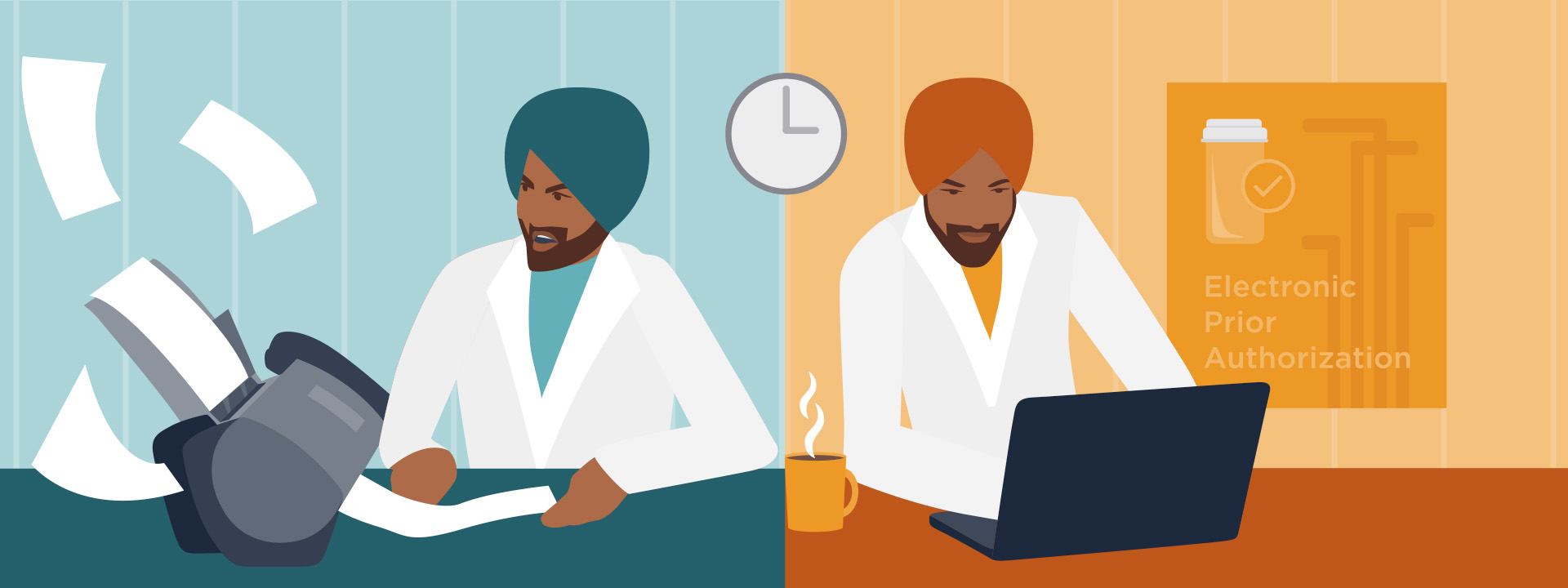It’s always a shock to hear that a quarter of pharmacists still manage prior authorization by fax (whether they want to or not). Faxing and paperwork are stubbornly persistent in healthcare workflows. That’s why digital tools like Electronic Prior Authorization hold so much promise.
In hindsight, I shouldn’t be shocked or surprised.
It’s not like patients don’t want to get better, but 74% of physicians surveyed by the American Medical Association say that at least some of their patients abandon treatment because of issues related to the prior authorization process. It’s clear that the process could be improved.
One issue is the time it takes to fill out paperwork and fax it back and forth.
Although this burden often falls to staff, patients feel it when their treatment is delayed, and the potential consequences can escalate from relatively mild to more severe. Pharmacies must restock prescriptions that don’t get picked up. Worse, patients are readmitted to the hospital because they’ve abandoned treatment.
Manual prior authorization takes time. Electronic Prior Authorization can take much less.
I recently co-authored a study, published this past summer in the peer-reviewed Journal of the American Pharmacists Association, where we analyzed more than 40,000 prior authorization transactions. Our study showed that the use of Electronic Prior Authorization reduced the median time from request to decision.
It went from 18.7 hours to 5.7 hours—a difference of 13 hours.
There is real value in processing prior authorizations electronically , “in stark contrast with the manual, paper-based version,” as my colleague Ashley Fifield wrote. It doesn’t just replace an outdated, inferior workflow, but also fulfills the original promise of prior authorization— promoting evidence-based care and reducing unnecessary tests and procedures—better than phone or fax ever could.
But what do providers think about Electronic Prior Authorization?
Speaking of phone and fax, we also examined providers’ experience with prior authorization in our study, based on the results of a survey sponsored by America’s Health Insurance Plans (AHIP).
Many providers still use fax machines, but that doesn’t mean they like it, and it doesn’t do anything to make the process more efficient. As our data brief about relieving provider burnout revealed in 2021, following up on prior authorizations is “very frustrating” for most pharmacists and prescribers.
But there’s good news here, too: In our study, not only did the median time from request to decision drop by 13 hours, but providers reported a drop in the number of phone calls and faxes it took to reach a decision.
And this means more time to spend with patients. That’s what really matters.
Surescripts Electronic Prior Authorization offers an integrated, beginning-to-end approach that connects health systems to patient-specific information within electronic health record (EHR) workflows, and accelerates time to therapy. And it demonstrates value for health plans, whose members can access medications they can afford and adhere to.
Learn more about addressing cost and coverage concerns—up front—with prescription benefit intelligence.


 Dean Riggott Photography
Surescripts
Dean Riggott Photography
Surescripts






